Blackheads are a common skin problem that can be frustrating to deal with. They occur when hair follicles become clogged with oil and dead skin cells, creating a small bump on the skin. While there are many products on the market that claim to remove blackheads, some people prefer to use natural remedies, such as olive oil.

Olive oil is a common ingredient in many skincare products because of its moisturizing and antioxidant properties. When used on the skin, it can help to soften and loosen blackheads, making them easier to remove. Additionally, olive oil contains vitamin E, which can help to reduce inflammation and redness associated with blackheads. However, it is important to note that not everyone’s skin reacts the same way to olive oil, and it may not be suitable for those with oily or acne-prone skin.
If you are interested in using olive oil to remove blackheads, there are several methods you can try. One popular method is to massage a small amount of olive oil onto your face, focusing on the areas with blackheads. After a few minutes, use a warm, damp cloth to gently wipe away the oil and any loosened blackheads. Another option is to mix olive oil with other natural ingredients, such as honey or sugar, to create a gentle exfoliating scrub. As with any new skincare product or method, it is important to patch test first and monitor your skin for any adverse reactions.
Understanding Blackheads
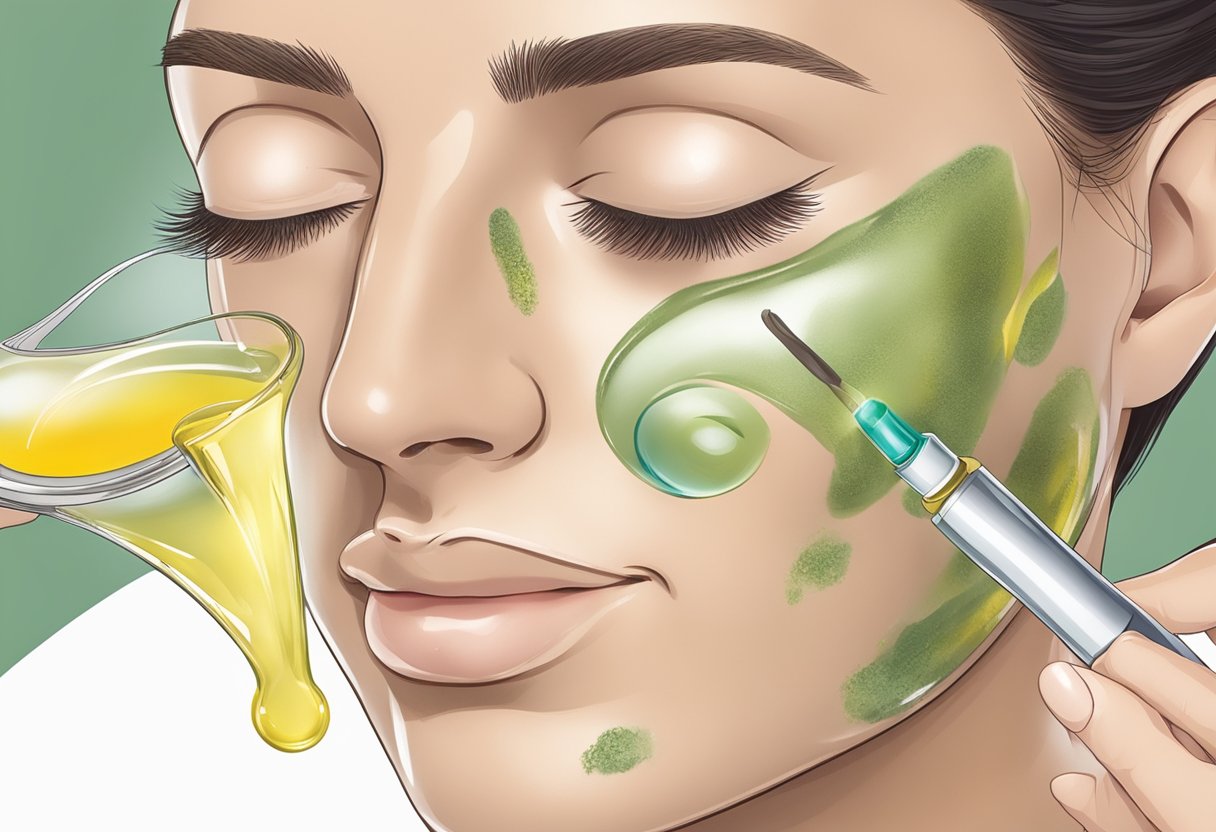
Causes of Blackheads
Blackheads are a type of acne that occurs when hair follicles become clogged with oil and dead skin cells. They are a common skin problem that affects people of all ages, but are most commonly seen in teenagers and young adults. The exact cause of blackheads is not known, but several factors are known to contribute to their formation.
Excess oil production is one of the main causes of blackheads. When the skin produces too much oil, it can mix with dead skin cells and clog the pores. Hormonal changes, such as those that occur during puberty, can cause the skin to produce more oil, which can lead to the formation of blackheads.
Poor skin hygiene is another factor that can contribute to the formation of blackheads. When the skin is not cleansed properly, oil, dirt, and dead skin cells can accumulate on the surface of the skin and clog the pores.
Why Olive Oil May Help
Olive oil is a natural oil that is rich in antioxidants and anti-inflammatory compounds. It has been used for centuries as a skin care remedy due to its moisturizing and nourishing properties. When used as a cleanser, olive oil can help to remove impurities from the skin and unclog pores.
Olive oil is also rich in oleic acid, a fatty acid that is known to have anti-inflammatory properties. Inflammation is a major contributor to acne, and reducing inflammation can help to prevent the formation of blackheads. Additionally, the vitamin E in olive oil can help to reduce the appearance of acne scars and promote skin healing.
To use olive oil to remove blackheads, simply massage a small amount of oil into the skin and allow it to sit for a few minutes. Then, use a warm washcloth to gently remove the oil and any impurities from the skin. Repeat this process regularly to help prevent the formation of blackheads and improve the overall health and appearance of the skin.
Preparation for Blackhead Removal
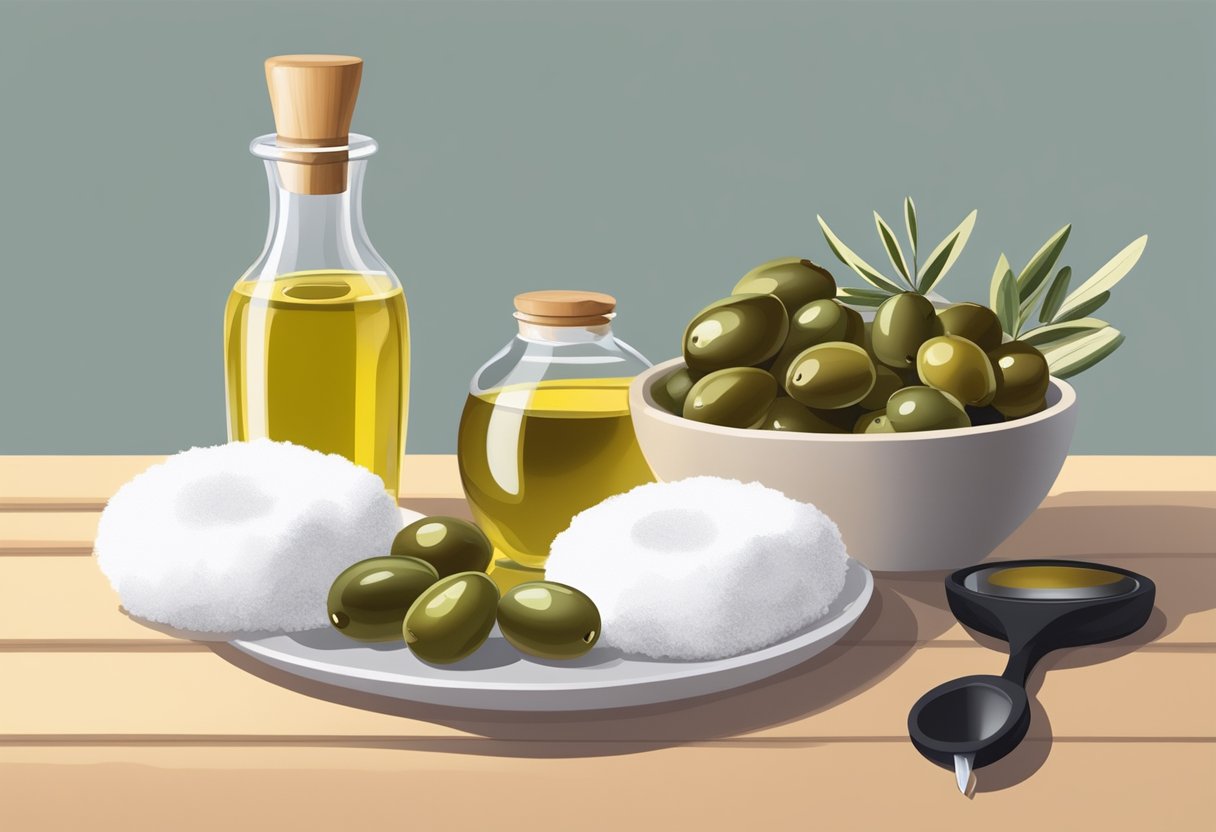
Selecting Quality Olive Oil
When selecting olive oil for blackhead removal, it is important to choose a high-quality oil that is pure and free from additives. Extra-virgin olive oil is a good choice as it contains a high amount of antioxidants and is less processed than other types of olive oil. Look for olive oil that is cold-pressed, as this method of extraction helps to preserve the oil’s nutrients and flavor.
Cleansing Your Skin
Before using olive oil to remove blackheads, it is important to cleanse your skin thoroughly. This will help to remove any dirt, oil, or makeup that may be clogging your pores. Begin by washing your face with a gentle cleanser that is appropriate for your skin type. Rinse your face with warm water and gently pat it dry with a clean towel.
Next, use a facial steam to open your pores and prepare your skin for the olive oil treatment. You can do this by filling a bowl with hot water and holding your face over the bowl for several minutes. Alternatively, you can use a facial steamer or a warm towel to achieve the same effect.
Once your pores are open, apply a small amount of olive oil to your fingertips and massage it into your skin using circular motions. Pay particular attention to the areas where blackheads are most common, such as the nose, chin, and forehead. Allow the oil to sit on your skin for 10 to 15 minutes before rinsing it off with warm water and patting your face dry.
Blackhead Removal Process
If you’re looking for a natural way to remove blackheads, olive oil can be a great option. Here are some simple steps to follow:
Applying Olive Oil
First, start by washing your face to remove any dirt or makeup. Then, apply a few drops of olive oil to your fingertips and gently massage it onto your face. Pay special attention to areas with blackheads, but be careful not to apply too much pressure.
Gentle Massage Techniques
Next, use gentle massage techniques to help loosen the blackheads. You can use your fingers to gently press and roll the skin, or use a soft-bristled brush to help exfoliate and remove dead skin cells.
Steaming Your Face
To help open up your pores and make it easier to remove blackheads, try steaming your face. You can do this by filling a bowl with hot water and holding your face over the steam for a few minutes. Alternatively, you can place a warm, damp cloth over your face for a similar effect.
After steaming, use a clean cloth to gently wipe away any excess oil and blackheads. Be sure to rinse your face with cool water to help close your pores and prevent further breakouts.
Overall, using olive oil to remove blackheads can be an effective and natural way to improve the appearance of your skin. With a little patience and gentle care, you can achieve a clearer, healthier complexion.
Aftercare and Maintenance
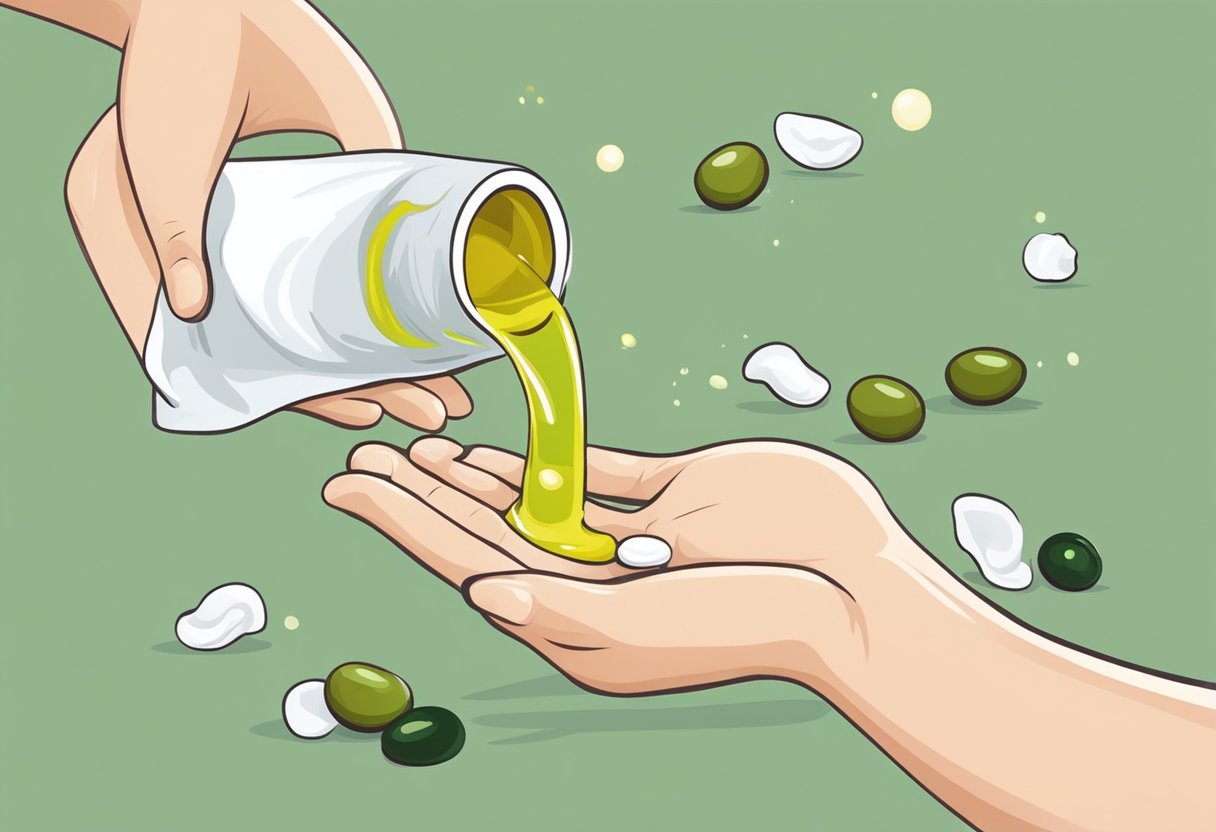
Rinsing Your Skin
After using olive oil to remove blackheads, it is important to rinse your skin thoroughly with lukewarm water. This will help to remove any excess oil and impurities from your skin. Make sure to use gentle, circular motions when rinsing your skin to avoid irritating it.
Applying Toner
After rinsing your skin, it is recommended to apply a toner to help restore your skin’s pH balance. Look for a toner that is alcohol-free and contains natural ingredients such as witch hazel or tea tree oil. Apply the toner to a cotton pad and gently swipe it over your face, avoiding the eye area.
Moisturizing
Olive oil can be a great natural moisturizer for your skin, but it is still important to follow up with a moisturizer after removing blackheads. Look for a moisturizer that is non-comedogenic and contains ingredients such as hyaluronic acid or glycerin to help hydrate your skin without clogging your pores.
Regular Skin Care Routine
In order to maintain clear, healthy skin, it is important to establish a regular skin care routine. This should include cleansing, toning, and moisturizing your skin twice a day, as well as using sunscreen during the day to protect your skin from harmful UV rays. Additionally, it is important to avoid picking at your skin or using harsh scrubs, as this can cause further irritation and damage.
Alternative Blackhead Removal Methods
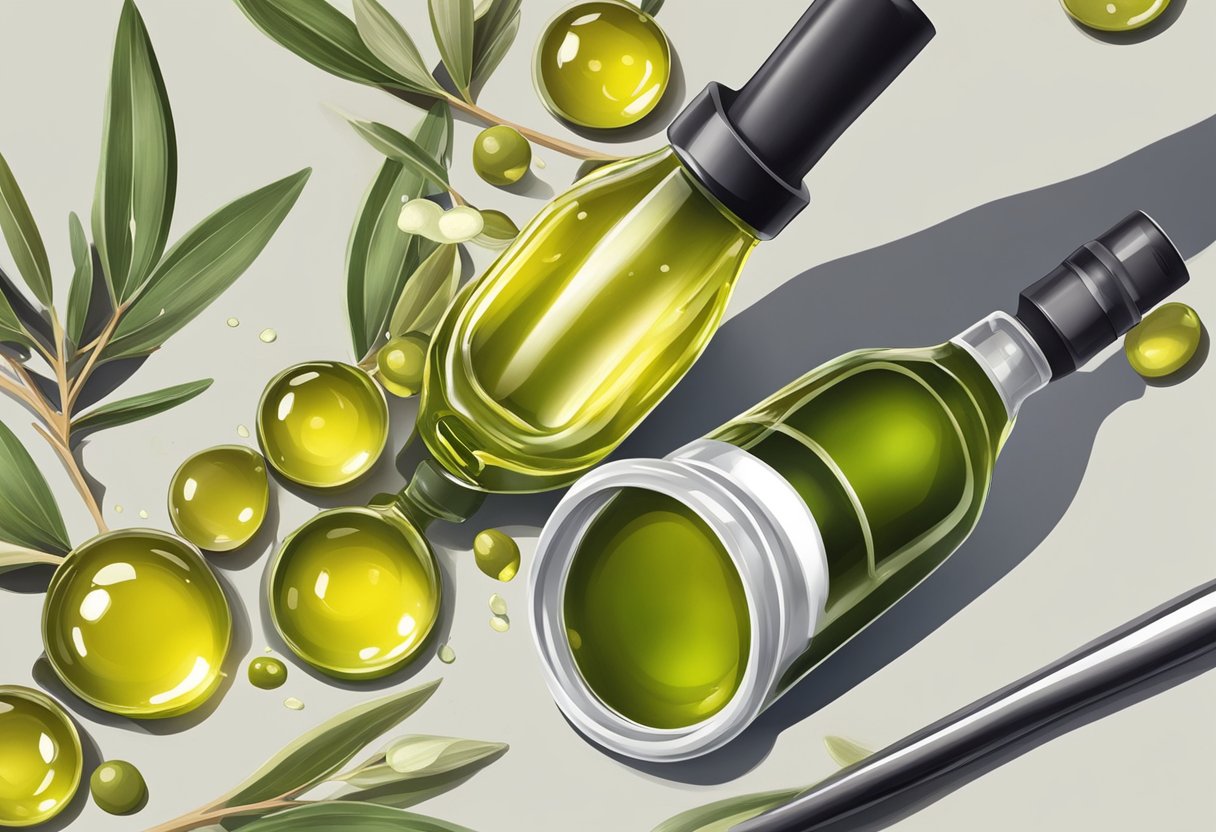
While olive oil can be an effective way to remove blackheads, there are also other methods that can be used to help get rid of these pesky blemishes. Here are a few alternative blackhead removal methods:
1. Steam
Steam can be a simple and effective way to help open up pores and loosen blackheads. To use this method, you can fill a bowl with hot water and lean over it with a towel draped over your head to trap the steam. Alternatively, you can use a facial steamer or take a hot shower to achieve the same effect.
2. Charcoal Masks
Charcoal masks have become increasingly popular in recent years as a way to remove blackheads. These masks typically contain activated charcoal, which is known for its ability to absorb impurities and toxins from the skin. To use a charcoal mask, simply apply it to your face, let it dry, and then peel it off to reveal smoother, clearer skin.
3. Exfoliation
Exfoliating your skin can help to remove dead skin cells and unclog pores, which can in turn help to prevent blackheads from forming. There are a variety of exfoliating products available, including scrubs, brushes, and chemical exfoliants. It’s important to choose a product that is gentle enough for your skin type and to avoid over-exfoliating, which can lead to irritation and dryness.
4. Clay Masks
Clay masks can also be effective for removing blackheads. These masks typically contain ingredients like kaolin or bentonite clay, which can help to absorb excess oil and impurities from the skin. To use a clay mask, simply apply it to your face, let it dry, and then rinse it off with warm water.
Overall, there are many different methods that can be used to help remove blackheads. It’s important to find a method that works for you and to be consistent with your skincare routine in order to achieve the best results.
Frequently Asked Questions
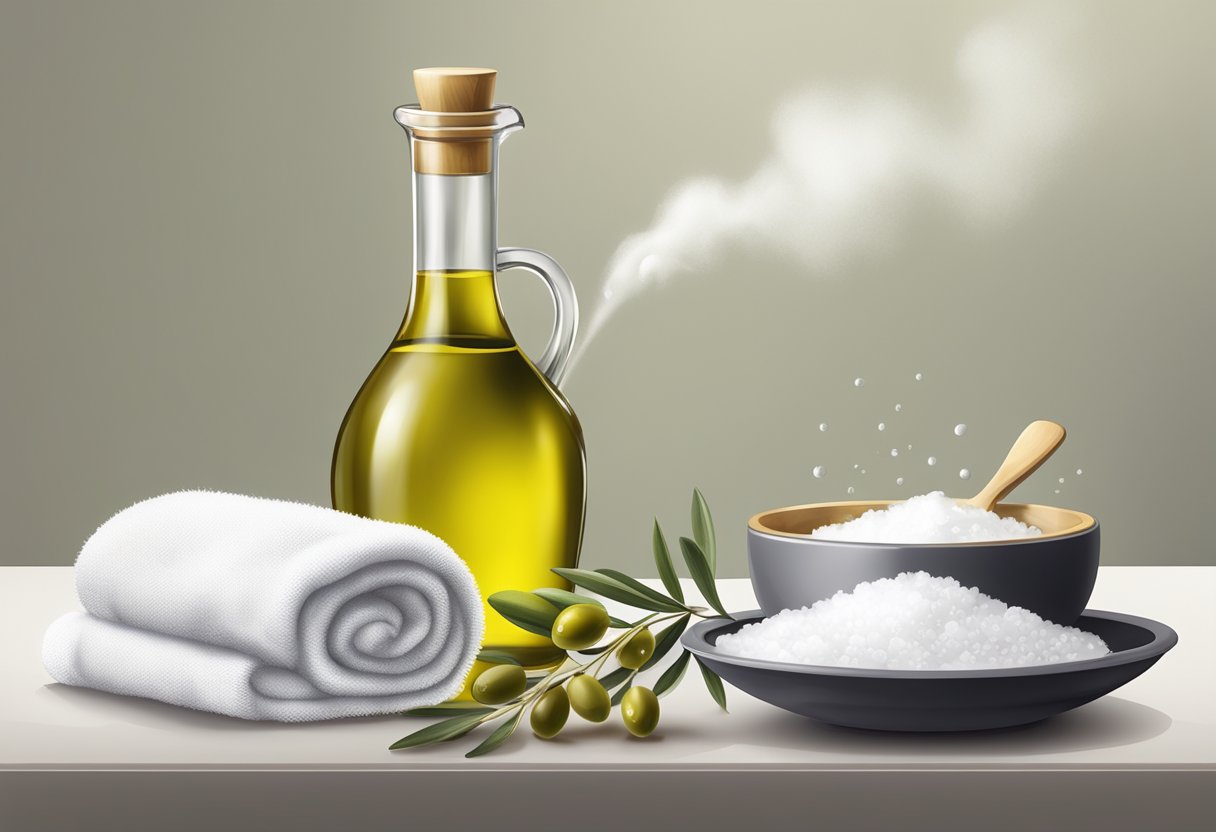
What is the correct method to use olive oil for blackhead removal?
To use olive oil for blackhead removal, start by washing your face with warm water to open up your pores. Then, apply a small amount of olive oil to your fingertips and gently massage it onto your face in circular motions. Leave the oil on for 10-15 minutes, then rinse it off with warm water and pat your face dry with a clean towel. You can repeat this process once or twice a week for best results.
Can olive oil be used as a face wash to combat blackheads?
Yes, olive oil can be used as a face wash to combat blackheads. Oil cleansing with olive oil can help to dissolve and remove excess oil, dirt, and impurities that can clog pores and cause blackheads. To use olive oil as a face wash, mix together olive oil and other oils according to a recipe, or use pure olive oil on its own. Massage the oil onto your face in circular motions, then rinse it off with warm water and pat your face dry with a clean towel.
Is it effective to use olive oil on acne-prone skin overnight?
Using olive oil on acne-prone skin overnight can be effective for some people, but it may not work for everyone. Olive oil contains antioxidants and anti-inflammatory compounds that can help to soothe and calm irritated skin, but it can also be comedogenic (pore-clogging) for some people, which can lead to more acne. If you want to try using olive oil on acne-prone skin overnight, start by applying a small amount to a patch of skin and waiting 24 hours to see if you have any adverse reactions.
How does olive oil affect existing acne scars when applied overnight?
There is some evidence to suggest that olive oil can help to reduce the appearance of acne scars when applied overnight. Olive oil contains vitamin E, which is a powerful antioxidant that can help to repair damaged skin cells and promote healing. To use olive oil on acne scars, apply a small amount to the affected area before bed and leave it on overnight. Repeat this process every night until you see improvement in the appearance of your scars.

